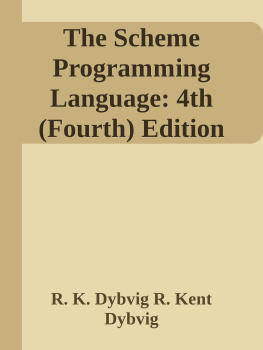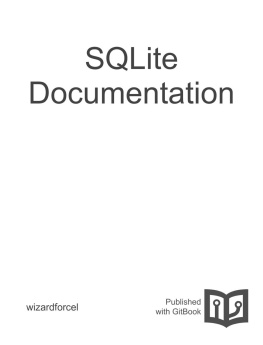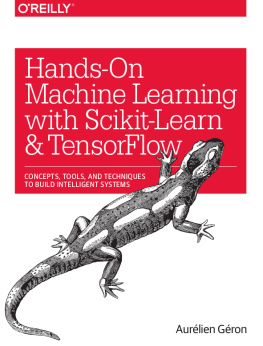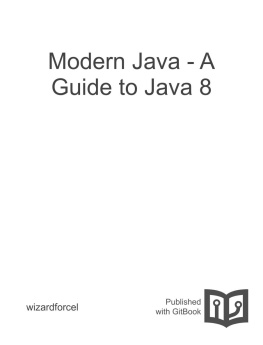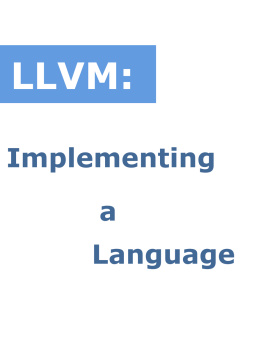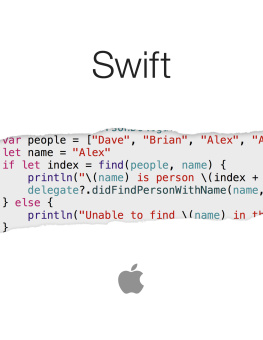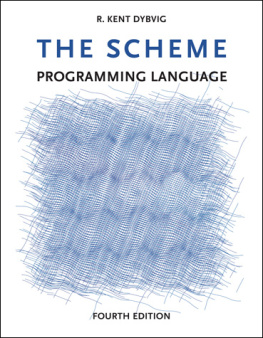it-ebooks - The Scheme Programming Language 4e
Here you can read online it-ebooks - The Scheme Programming Language 4e full text of the book (entire story) in english for free. Download pdf and epub, get meaning, cover and reviews about this ebook. year: 2017, publisher: iBooker it-ebooks, genre: Romance novel. Description of the work, (preface) as well as reviews are available. Best literature library LitArk.com created for fans of good reading and offers a wide selection of genres:
Romance novel
Science fiction
Adventure
Detective
Science
History
Home and family
Prose
Art
Politics
Computer
Non-fiction
Religion
Business
Children
Humor
Choose a favorite category and find really read worthwhile books. Enjoy immersion in the world of imagination, feel the emotions of the characters or learn something new for yourself, make an fascinating discovery.
- Book:The Scheme Programming Language 4e
- Author:
- Publisher:iBooker it-ebooks
- Genre:
- Year:2017
- Rating:5 / 5
- Favourites:Add to favourites
- Your mark:
- 100
- 1
- 2
- 3
- 4
- 5
The Scheme Programming Language 4e: summary, description and annotation
We offer to read an annotation, description, summary or preface (depends on what the author of the book "The Scheme Programming Language 4e" wrote himself). If you haven't found the necessary information about the book — write in the comments, we will try to find it.
The Scheme Programming Language 4e — read online for free the complete book (whole text) full work
Below is the text of the book, divided by pages. System saving the place of the last page read, allows you to conveniently read the book "The Scheme Programming Language 4e" online for free, without having to search again every time where you left off. Put a bookmark, and you can go to the page where you finished reading at any time.
Font size:
Interval:
Bookmark:

Scheme is a general-purpose programming language, descended from Algol andLisp, widely used in computing education and research and a broad range ofindustrial applications. This thoroughly updated edition of The SchemeProgramming Language provides an introduction to Scheme and adefinitive reference for standard Scheme, presented in a clear and concisemanner. Written for professionals and students with some priorprogramming experience, it begins by leading the programmer gently throughthe basics of Scheme and continues with an introduction to some of themore advanced features of the language.
The fourth edition has been substantially revised and expanded to bringthe content up to date with the current Scheme standard, theRevised6 Report on Scheme. All parts of the book were updatedand three new chapters were added, covering the language's new library,exception handling, and record-definition features.
The book offers three chapters of introductory material with numerousexamples, eight chapters of reference material, and one chapter ofextended examples and additional exercises. All of the examples can beentered directly from the keyboard into an interactive Scheme session. Answers to many of the exercises, a complete formal syntax of Scheme, anda summary of forms and procedures are provided in appendixes.
The Scheme Programming Language is the only book available thatserves both as an introductory text in a variety of courses and as anessential reference for Scheme programmers.
About the Author
R. Kent Dybvig is Professor of Computer Science at Indiana University and principal developer of Chez Scheme.
Endorsements
"Kent Dybvig's The Scheme Programming Language is to Scheme whatKernighan and Ritchie's The C Programming Language is to C. Kent'sbook is the book for either the novice or serious Scheme programmer. Itsstyle, wit, and organization has reached a new high with the publicationof the fourth edition."
Daniel P. Friedman, Department of Computer Science, IndianaUniversity
"Students in my Programming Language Concepts class need to learn thebasics of Scheme in a few days, and to pick up harder concepts throughoutthe course. For 19 years, The Scheme Programming Language has been an excellentguide for them. Dybvig's rapid-fire prose and examples serve both the Scheme beginner andthe experienced programmer in need of a reference. Seldom do my students make a point of praising a computer sciencetextbook; that happens over and over with this one."
Claude W. Anderson, Rose-Hulman Institute of Technology
"Eric Raymond once wrote that learning Lisp makes one a better programmerfor the rest of one's days. Scheme is the best dialect of Lisp to learnfor this purpose, and Kent Dybvig's book provides a comprehensive andbeautiful introduction to learning Scheme and becoming a betterprogrammer."
Olivier Danvy, Aarhus University,Denmark, co-Editor-in-Chief of Higher-Order and SymbolicComputation
Scheme was introduced in 1975 by Gerald J. SussmanandGuy L. Steele Jr. [Lisp to fully support lexical scoping, first-classprocedures, and continuations.In its earliest form it was a small language intended primarilyfor research and teaching, supporting only a handful of predefinedsyntactic forms and procedures.Scheme is now a complete general-purpose programming language,though it still derives its power from a small set of key concepts.Early implementations of the language were interpreter-basedand slow, but some current Scheme implementations boast sophisticatedcompilers that generate code on par with code generated by the bestoptimizing compilers for lower-level languages such as C and Fortran.
This book is intended to provide an introduction to the Scheme programming languagebut not an introduction to programming in general.The reader is expected to have had some experience programming andto be familiar with terms commonly associated with computers andprogramming languages.Readers unfamiliar with Scheme or Lisp shouldalso consider reading The Little Schemer [] to become familiar withthe concepts of list processing and recursion.Readers new to programming should begin with an introductory text onprogramming.
Scheme has been standardized both formally and informally.The ], which was completed in 2007.
This book covers the language of the Revised6 Report.It is not intended to supplant the Revised6 Report but rather toprovide a more comprehensive introduction and referencemanual for the language, with more explanatory text and examples,suitable more for users than for implementors.Features specific to particular implementations of Scheme are not included.In particular, features specific to the author's].On the other hand, no book on Scheme would be complete without some coverageof the interactive top level, since nearly every Scheme system supports interactiveuse in one form or another, even though the behavior is not standardized by theRevised6 Report.Chapters 2 and 3 are thus written assuming that the reader has available a Schemeimplementation that supports an interactive top level, with behavior consistentwith the description of the top-level environment in earlier reports and theIEEE/ANSI standard.
A large number of small- to medium-sized examples are spread throughoutthe text, and one entire chapter is dedicated to the presentation of aset of longer examples.Many of the examples show how a standard Scheme syntactic form orprocedure might be implemented;others implement useful extensions.All of the examples canbe entered directly from the keyboard into an interactive Schemesession.
This book is organized into twelve chapters, plus back matter.Chapter also describes Scheme's notational conventions and thetypographical conventions employed in this book.
Chapter bysitting at the keyboardand typing in the examples and trying the exercises.
Chapter continues the introduction but coversmore advanced features and concepts.Even readers with prior Scheme experience may wish to workthrough the examples and exercises found there.
Chapters , exceptions and conditions.
Chapter contains a collection of example procedures,libraries, and programs, each with a short overview, some examples ofits use, the implementation with brief explanation, and a set ofexercises for further work.Each of these programs demonstrates a particular set of features,and together they illustrate an appropriate style forprogramming in Scheme.
Following Chapter arebibliographical references,answers to selected exercises,a detailed description of the formal syntax of Scheme programs and data,a concise summary of Scheme syntactic forms and procedures,andthe index.The summary of forms and procedures is a useful first stop forprogrammers unsure of the structure of a syntactic form or thearguments expected by a primitive procedure.The page numbers appearing in the summary of forms and procedures andthe italicized page numbers appearing in the index indicate thelocations in the text where forms and procedures are defined.
Because the reference portion describes a number of aspects of thelanguage not covered by the introductory chapters along with a numberof interesting short examples,most readers will find it profitable to read through most of thematerial to become familiar with each feature and how it relates toother features.Chapter is lengthy, however, and may be skimmedand later referenced as needed.
Next pageFont size:
Interval:
Bookmark:
Similar books «The Scheme Programming Language 4e»
Look at similar books to The Scheme Programming Language 4e. We have selected literature similar in name and meaning in the hope of providing readers with more options to find new, interesting, not yet read works.
Discussion, reviews of the book The Scheme Programming Language 4e and just readers' own opinions. Leave your comments, write what you think about the work, its meaning or the main characters. Specify what exactly you liked and what you didn't like, and why you think so.

